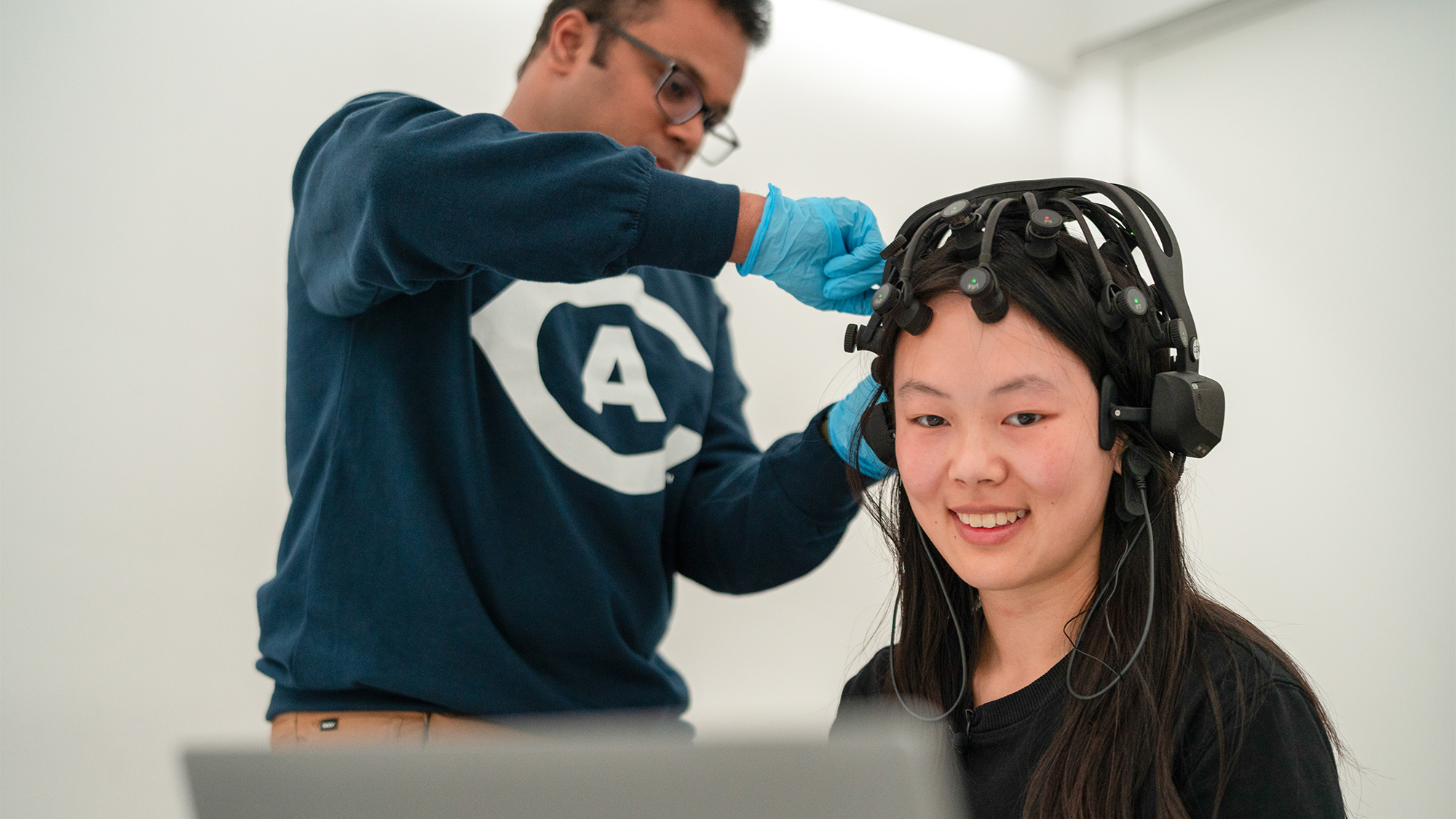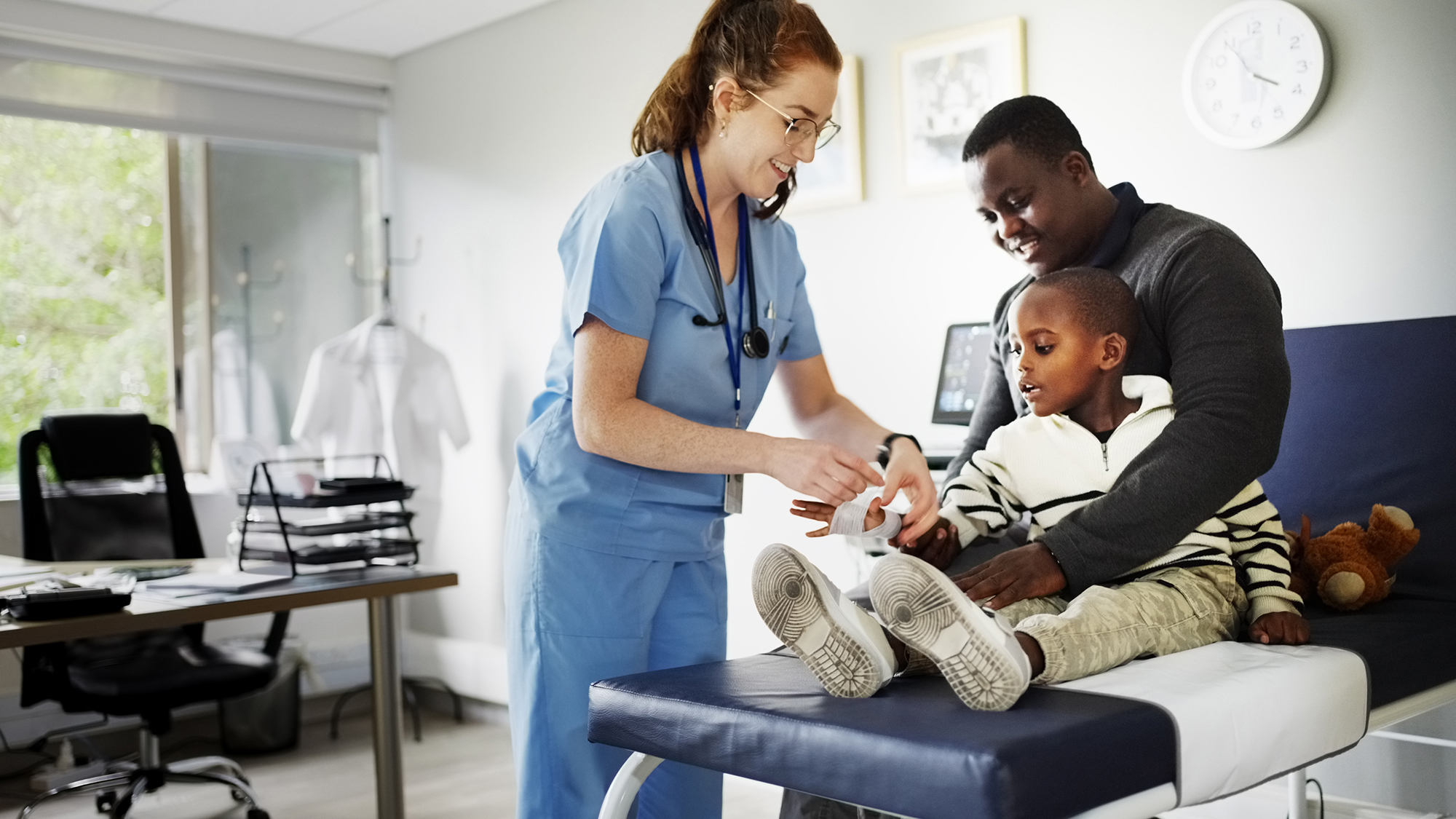The From Labs to Lives Blog connects everyday topics with UC Davis research. Each post is reviewed by our experts, ensuring you always get useful information you can trust.
Because we can’t see them, bones are often forgotten about or taken for granted. But bones are living, dynamic organs with surprising complexity, and they play a vital role in nearly every system of the human body.
Dr. Kent Leach, a UC Davis expert in bone regeneration, reviewed this article and answered our questions about the fascinating world of bones.
There is so much to study about bones. Genetic differences in bone structure and changes during disease will lead to new therapies to regrow and heal damaged bone, as well as fight off disease.
— Leach
What are bones made of?
Proteins and cells are the building blocks of bones. Bones have two main parts:
- Compact bone makes up the outer layer of the bone. It’s strong and dense.
- Cancellous bone, also known as the spongy bone, is much lighter and flexible. It contains your bone marrow.
What type of tissue is bone?
Bones are made up of connective tissue that is reinforced with calcium and bone cells.
What are the three types of bone cells?
Osteoblasts
Osteoblasts strengthen your existing bones and help form new bone tissue. Their functions are to grow new bones, reshape them as you age and heal broken ones.
Think of them as the construction crew. They pour the concrete and put up the beams, building new bone and making it stronger.
Osteocytes
Osteocytes are derived from osteoblasts and regulate bone remodeling and maintenance. They are the most numerous cell type in bones and live the longest.
These are the building inspectors. They used to be builders, but now they live inside the structure, checking on it, making sure everything is solid and calling for repairs if needed.
Osteoclasts
Osteoclasts dissolve and break down old or damaged bone cells.
These are the demolition team. They come in with sledgehammers and bulldozers to tear down old or damaged parts so the builders can replace them with fresh, strong bone.
Mnemonic device: Bone cells
Here’s an easy way to remember them:
- Osteoblasts = builders
- Osteocytes = site inspectors
- Osteoclasts = crashers

From Labs to Lives
At UC Davis, our research helps people like you. Federal funding helps us move discoveries from our labs to your community faster. Learn how you can support life-changing research.
Are bones organs? Are they alive?
The bones in your body are alive and are considered a structural organ. They grow and change all the time.
Bones constantly remodel themselves in response to signals from hormones and physical activity. And they carry out ongoing metabolic functions such as storing and releasing minerals.
Most of your bones stop growing by the time you finish high school.
Bone marrow: Your blood factory
Bone marrow is a spongy substance found in the center of the bones.
Healthy bone marrow is important because it contains stem cells that make new blood cells and parts of the immune system.
Without healthy bone marrow, your body would struggle to fight off infections and diseases.
What are the two types of bone marrow?
The two types of bone marrow are named for their colors: red and yellow.
Red marrow
Red marrow is mostly found in flat bones, such as the pelvis and ribs. It makes blood cells through a process called hematopoiesis.
Stem cells in red marrow produce red blood cells (which carry oxygen), white blood cells (which fight infection) and platelets (which help blood clot).
Yellow marrow
Yellow marrow is found in the hollow spaces of long bones, like the femur. It mainly stores fat, which the body can use for energy, and can make cartilage and fat cells.
As people age, more of their bone marrow changes from red to yellow.
How many bones are in the human body?
At birth, babies have around 300 bones. But as we grow, some of these fuse together to form larger bones of the skeletal system. By the time we reach adulthood, we’re left with 206 bones.
You may have noticed fontanelles, or soft spots, in an infant’s skull. This allows for brain growth and flexibility during childbirth.
What are the smallest and biggest bones in humans?
The smallest bone
The stapes is the smallest bone in the human body. It’s located in the middle ear and helps transmit sound vibrations from the eardrum to the inner ear. It measures just about 3 millimeters in length.
The largest bone
The femur is the longest and strongest bone in the human body. It’s located in the thigh and connects your hips to your knees. It supports the entire weight of the upper body when you stand, walk or run. The femur can withstand forces up to 30 times your body weight.
How much does a skeleton weigh?
Bones typically account for 12% to 15% of a person’s total body weight.
For example, someone who weighs 100 pounds may have a skeleton that weighs 12 to 15 pounds. Someone who is 150 pounds may have a skeleton that weighs about 18 to 22 pounds.
This can vary depending on the sex of the person, body size and bone density. Males usually have denser bones than females.
Takeaway
When it comes to your bones, Leach has a message for everyone:
Bone is a magnificent, living structure that supports your having a happy life from when you are a kid to an older adult. It changes based on what you eat and how active you are. Take care of your skeleton!
— Leach
Bones are living organs that play an important role in the body. That’s why taking proper care of your bones by eating nutritious food, exercising and learning more about how they work is so important.

Bone Density: How To Build Strong Bones
UC Davis explains how bone density is measured, what nutrients and exercises support strong bones and what habits protect against osteoporosis.
Fun facts about bones
- Are teeth bones?
- While teeth and bones may look similar, they are not the same. Teeth are made of enamel, which is harder than bone but doesn’t contain collagen or bone marrow. Unlike bones, teeth do not regenerate or remodel themselves.
- Do sharks have bones?
- No, sharks don’t have bones at all. Their skeletons are made entirely of cartilage, a flexible, lightweight tissue. This makes sharks more buoyant, helping them stay afloat.
- Do bones have nerves?
- Yes, bones contain nerves, especially in the outer layer (periosteum). That’s why breaking a bone hurts so much.
- Are bones lighter than steel?
- Bone is actually stronger than steel when compared by weight, but it’s also much lighter. That’s why our skeleton can support us without being too heavy.
- Do astronauts lose bone in space?
- Yes. Without gravity, astronauts can lose up to 1% of their bone mass each month. Exercise in space helps slow down this bone loss.
- What is the only bone not connected to another bone?
- The hyoid bone in your throat. It helps you swallow and speak, but it doesn’t attach directly to any other bone.
- Can bones heal completely?
- Yes, bones are one of the few tissues that can heal without forming a scar. The new bone can be just as strong as it was before.
Review process
Reviewer
Dr. Kent Leach is an expert in bone regeneration at UC Davis Health’s Department of Orthopaedic Surgery and UC Davis’ Department of Biomedical Engineering. His research focuses on developing biomaterials that help the body heal itself by enhancing the ability of living cells to repair damaged bones.
Writer
Anila Lijo is a writer-editor for UC Davis’ Office of Strategic Communications.
Editors
- Tatiana Muñiz is an SEO copywriter for UC Davis’ Office of Strategic Communications.
- Jocelyn Anderson is a magazine editor for UC Davis’ Office of Strategic Communications.
